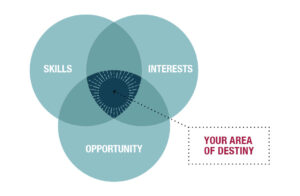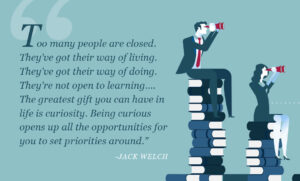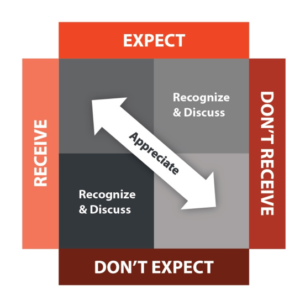
“The best move you can make in negotiation is to think of an incentive the other person hasn’t even thought of – and then meet it.”
~Eli Broad~
Nora received a job offer for the position of her dreams. She was ecstatic. She wasn’t even focused on the salary. Fortunately, she shared the news with one of her mentors, who had also been her very first boss. “Don’t accept without a negotiation,” her mentor advised her. He shared these statistics about salary from a recent Glassdoor survey:
- Three of five employees do not negotiate their salary.
- Women are less likely than men to negotiate—68% of women vs. 52% of men abstain from negotiating. This is a shame, because salary is almost always negotiable.
- When men negotiate their salary, they’re over three times more likely than women to succeed. This may stem in part from confidence—men tend to have an easier time asking for what they want—though that’s not to dismiss the impact of sexism. However, it’s getting better: The gender gap is much lower for younger workers than for older ones.
- Older workers as a whole are also less likely to negotiate salary. As younger employees set the pace for negotiations, the older generations would be well advised to keep up—with their experience, they’re likely settling for less than they could have.
Here are 4 steps to succeeding in your next salary negotiation so you can Get Paid What You’re Worth.
-
Build Up Your Confidence
Having confidence is crucial to salary negotiation. Knowing the interviewer expects you to negotiate should give you a confidence boost. Remember that the raises you get down the road will depend on your starting salary.Mentally prepare your spiel about your track record of success. Get ready to cite the specific results of projects you handled in your current or previous role. If you’re asking for a raise from your current boss, prepare to discuss your successes as thoroughly as you would for an interview. Rehearse with a friend to make your answers as eloquent as possible. -
Do Your Research
Whether accepting a new position or asking your current boss for a raise, find out the typical salary range for your position in your geographical area. Remember, this could have changed in recent years. When you’re knowledgeable about salary ranges, you’ll feel much more confident making an offer. Consider the current state of the industry, too. Was it struggling when you accepted your position, but now flourishing? That gives you plenty of room to negotiate. -
Hold Off on a Number
Try not to be the first to put forth a number, says Michael Zwell in Six Figure Salary Negotiation. If asked about your expectations, try to give a less specific answer, such as “My expectations are in line with my experience and abilities,” he adds.If forced to give an answer, factor all the benefits you would like into the number, says Roger Dawson in Secrets of Power Salary Negotiation. Such benefits may include potential work bonuses, health insurance, retirement plan, vacations, and tuition reimbursement.If you’re switching careers, request the chance to renegotiate after six months, says Zwell. This gives you a window of time to prove yourself in the new role, and then to request more than you could have initially.
-
Use Leverage
If you’re applying for a new position, indicate that you’re considering another offer, says Dawson. At the same time, signal some degree of flexibility about salary. Highball your target salary, but say something like, “I might be able to take a little less,” he suggests. Know the company is almost certainly lowballing you if they make an offer—they expect you to make a higher counteroffer.
As Zwell says, if you’re negotiating with a current employer, you won’t be terminated for aiming much too high, whereas with a prospective employer, it’s possible you could lose the opportunity. However, aiming much too high with your current employer could signal that you’re unhappy with your position, he asserts.
If you’re offered a promotion within your company, remember that salary is negotiable here as well. Bring up the salary question with your potential new boss, not your current one, says Zwell. If made an offer, don’t be afraid to make a counteroffer. Consider what they’d have to pay a new hire, as well as the value added from your familiarity with the company.
Most importantly, have patience. The salary negotiation process can take a little time, and not settling on an offer too soon can benefit you over your entire career.
Negotiate in person if at all possible, says Dawson. It shows you’re serious and gives you a chance to respond to questions as they arise. Ask the company to put your agreement in writing, he adds. This eliminates any misunderstanding, especially when factoring in the benefit and compensation packages. Remember, the company is typically as eager as you to reach a mutually agreeable salary and move on!
If you want to get paid what you’re worth, utilize Joel’s Salary Negotiation Coaching.
Don’t miss a post – Subscribe to Career Advancement Blog now!











 What can you do to eliminate FOSU in your team or organization?
What can you do to eliminate FOSU in your team or organization? We encourage you to Own the U.G.L.Y., by asking these 4 strategic questions:
We encourage you to Own the U.G.L.Y., by asking these 4 strategic questions:



